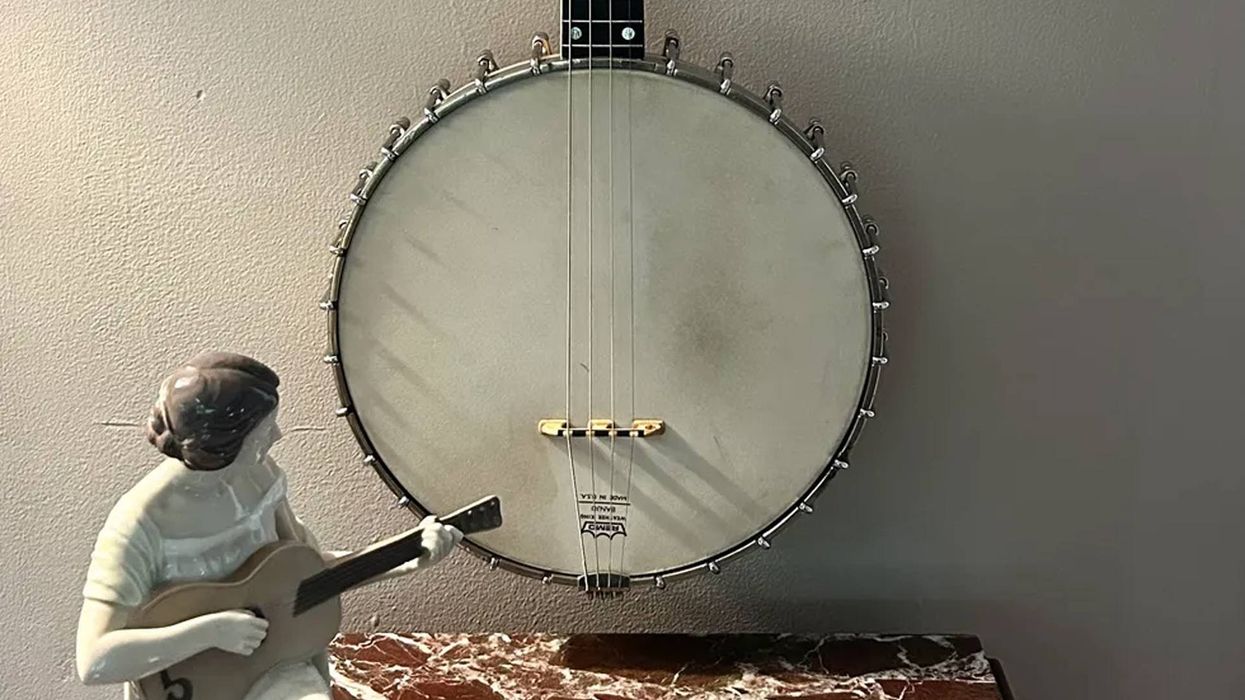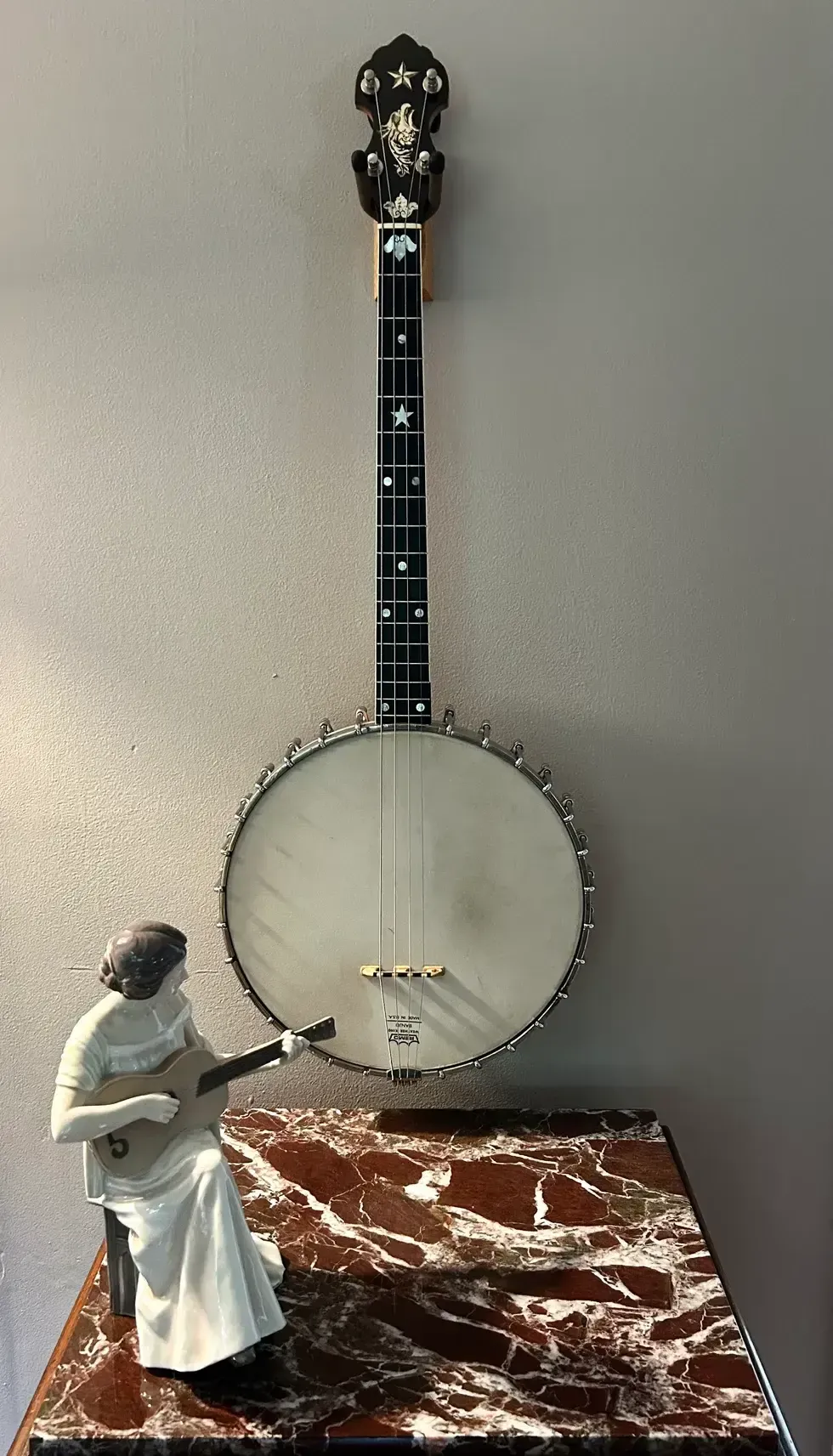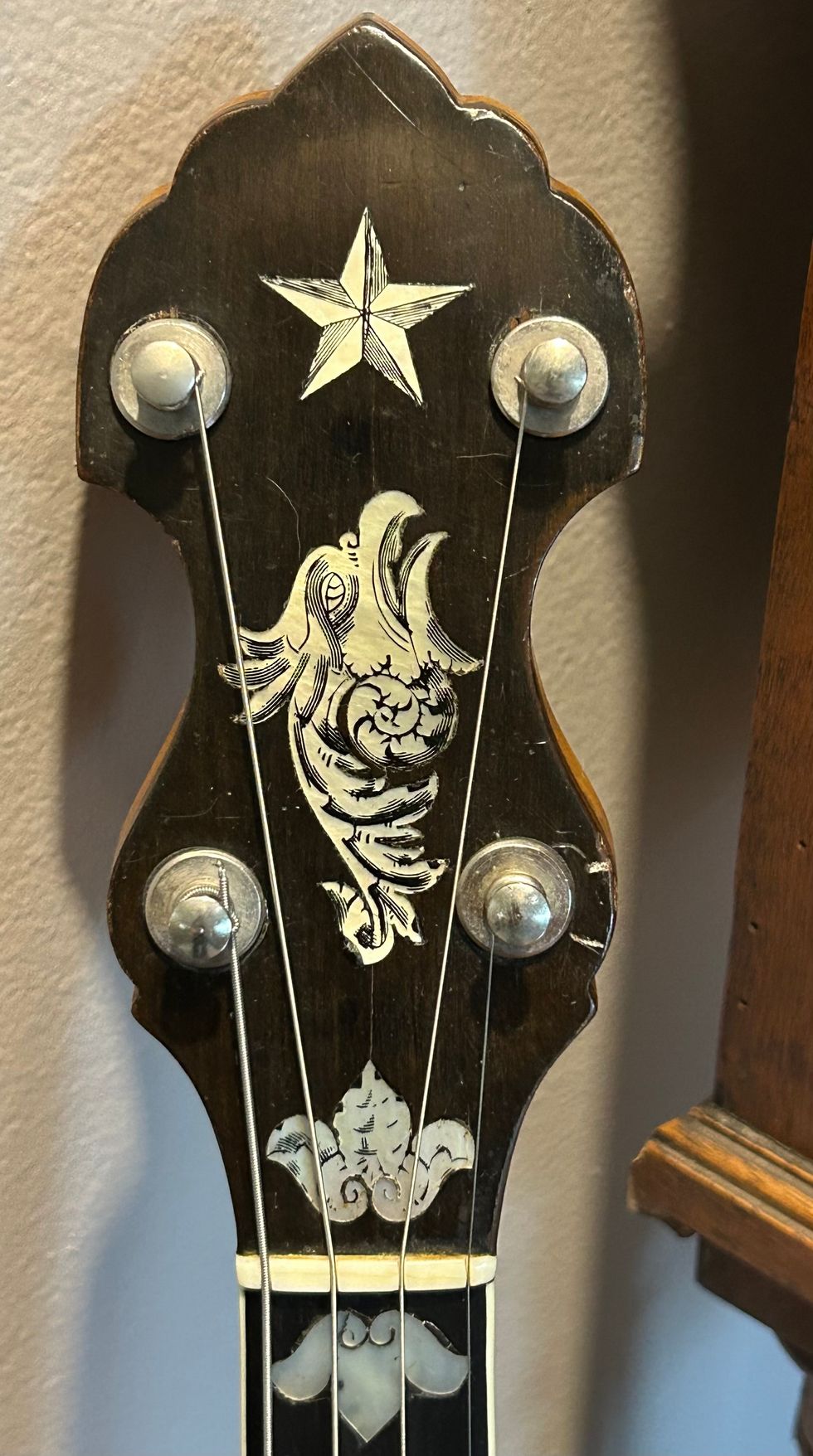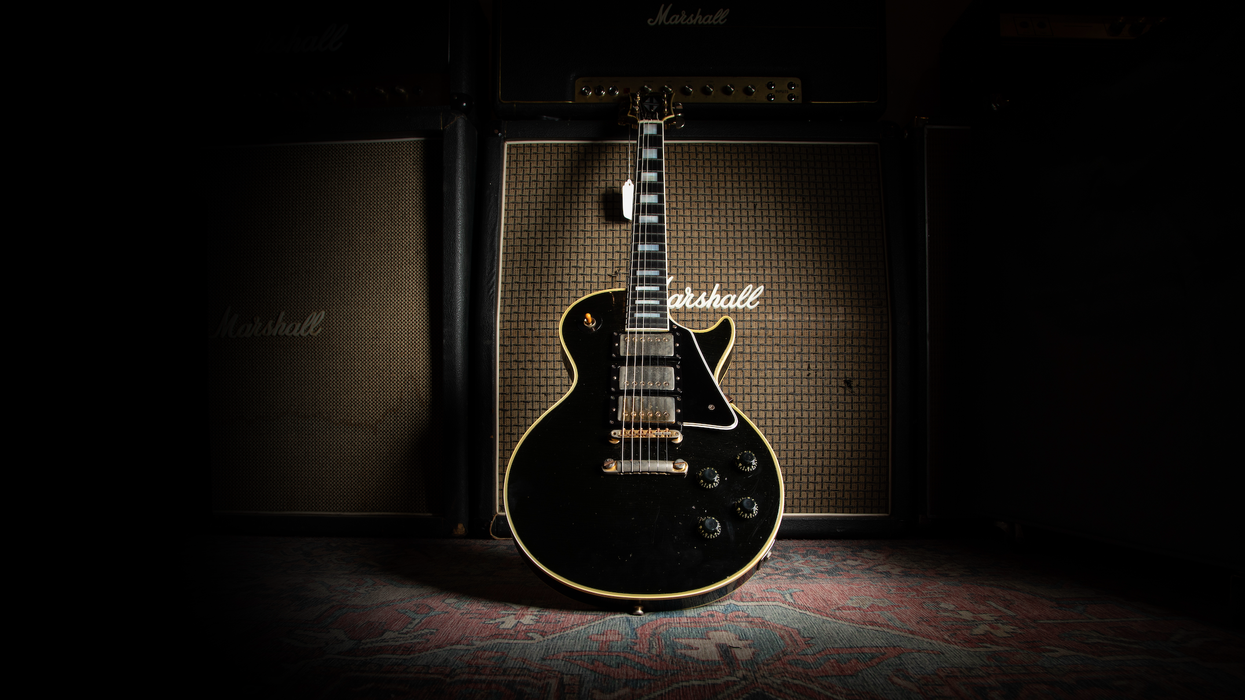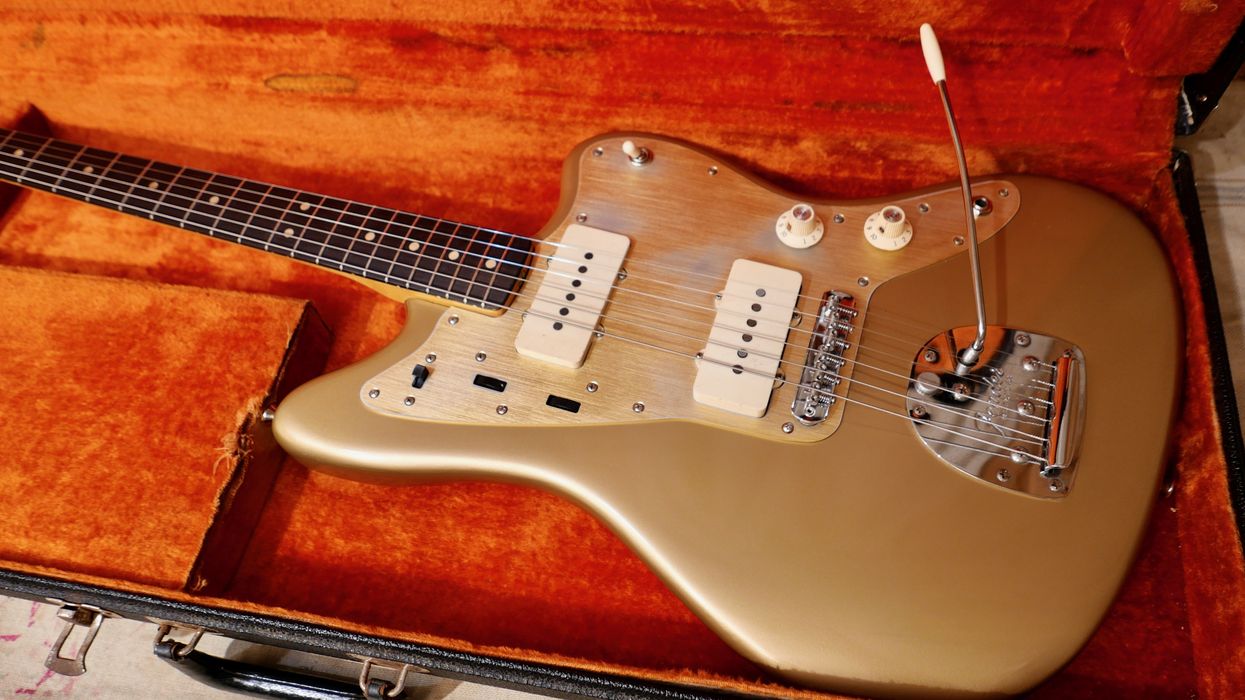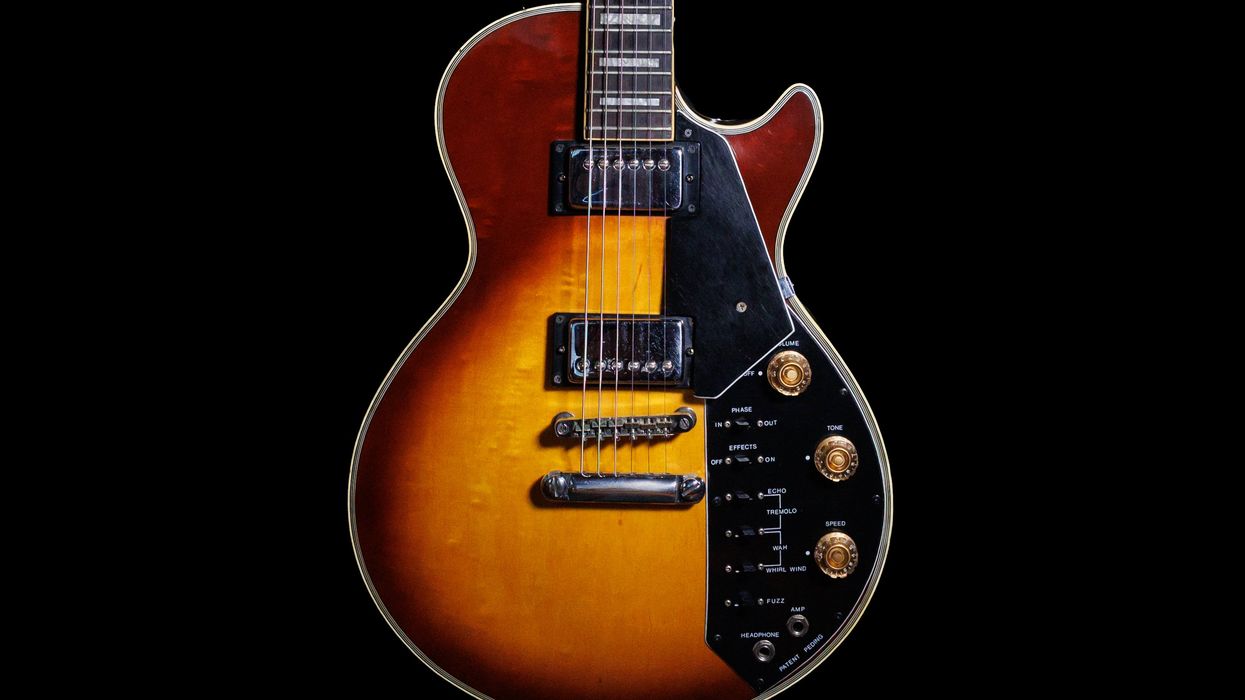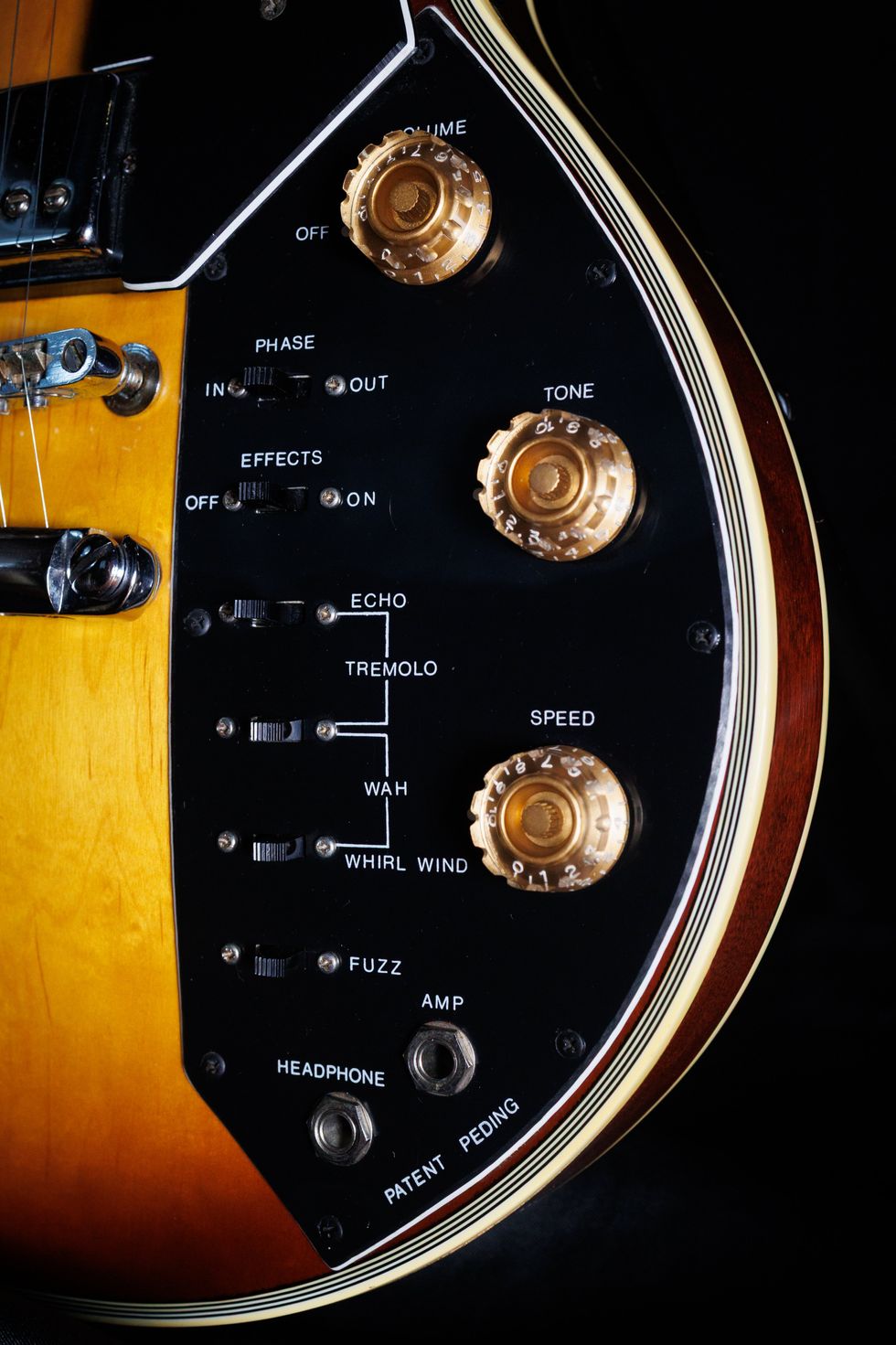Inspired by the construction methods used in building violins, Orville Gibson developed innovative fretted instruments with carved tops and backs that brought his company great success in the early 1900s. By the early 1920s, Gibson’s acoustic engineer, Lloyd Loar, and his team took the violin inspiration a step further by designing a family of high-quality fretted instruments with f-holes. This family included the legendary L-5 guitar and F-5 mandolin.
From the time of its introduction in 1922 until today, the L-5 has been considered one of the finest jazz guitars. Jazz greats Eddie Lang, Allan Reuss, and Wes Montgomery played versions of this classic archtop. It evolved from its original 16" width to its current 17" width in 1934. By 1939, the L-5 gained a cutaway, and in 1951 it became electrified.
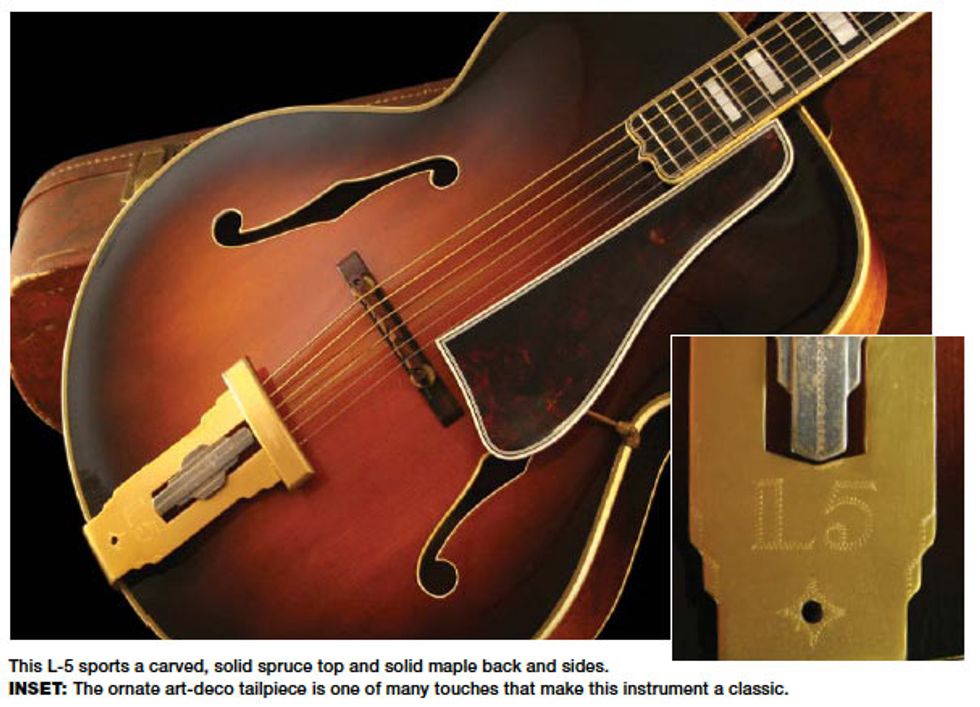
The L-5 guitar spotlighted this month is a non-cutaway acoustic version dating to 1952. While cutaway acoustic and electric versions were available that year, Gibson still provided a guitar for players specializing in rhythm-only jazz playing. The interest in these noncutaway acoustics gradually dwindled throughout the ’50s. In 1952, 27 non-cutaway L-5s were produced, whereas in 1958 only five were made. The noncutaway L-5 was discontinued at the end of that year and was not seen again until the 16" version was reissued in the ’90s.
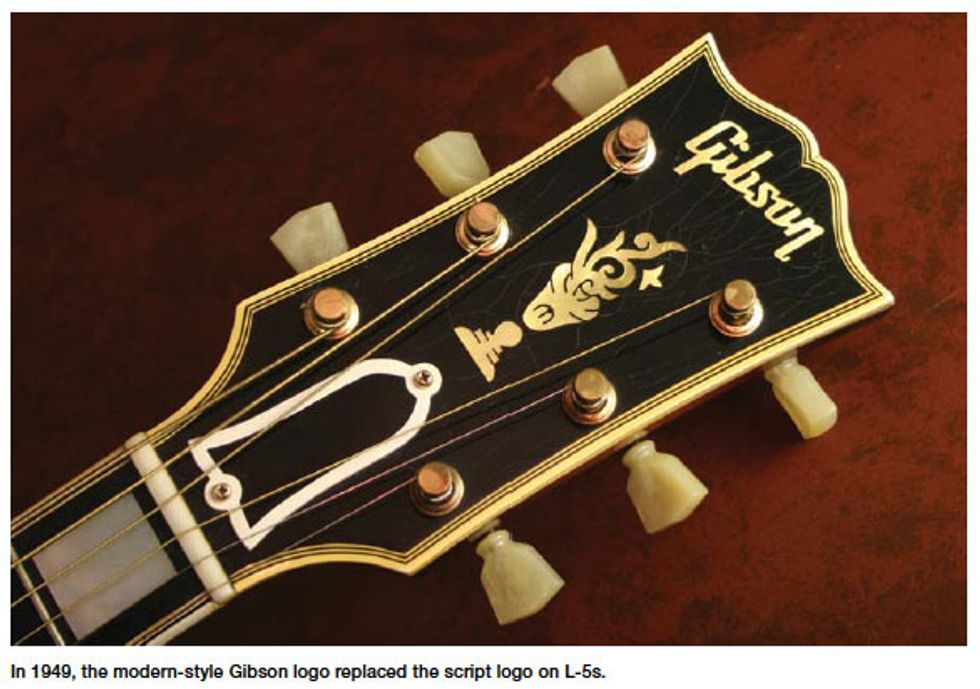
The 1952 L-5 pictured here has all the characteristics common to that year, including the well-known mother-of-pearl flower pot/torch headstock inlay and modern-style Gibson logo (replacing the script logo in 1949). Other noteworthy features are its gold Kluson Sealfast tuners with plastic buttons, a two-piece curly maple neck with a mahogany center strip and a bound ebony fretboard, a 17"- wide body with solid maple back and sides, a carved spruce top, and the classic art-deco tailpiece.
To learn more about Gibson L-5s, check out The Gibson L5: Its History and Its Players by Adrian Ingram, The Gibson Super 400: Art of the Fine Guitar by Thomas A. Van Hoose, and Gibson Shipment Totals: 1937-1979 by Larry Meiners.
Dave ’s Guitar Shop
Dave Rogers’ collection is tended by Laun Braithwaite and Tim Mullally and is on display at:
Dave’s Guitar Shop
1227 Third Street South
La Crosse, WI 54601
davesguitar.com
Photos by Mullally and text by Braithwaite.















